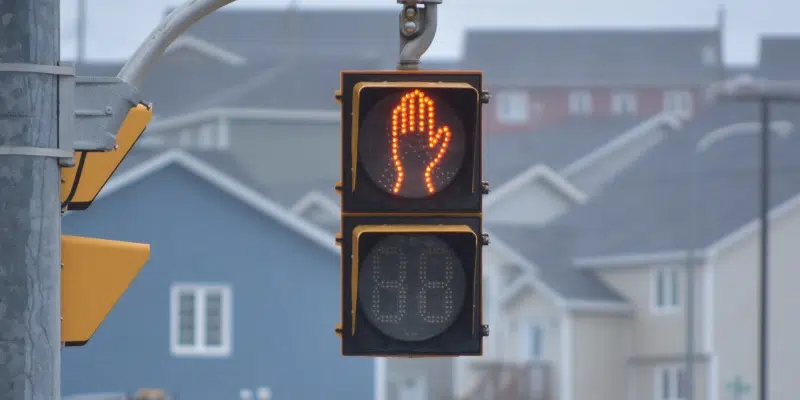Pedestrians outside the “core” of the capital city are once again going to have to push a button to let drivers know they want to cross an intersection.
Last May, the City of St. John’s implemented “pedestrian recall” at about 100 intersections across the city, meaning the walk signal would activate on every cycle of traffic
This was done as a way to limit the spread of COVID-19, however, the city received complaints that traffic was being tied up when no pedestrians needed to cross the street.
The city is going to reverse that decision outside the city’s core, meaning you will have to push the button to cross the road outside of the downtown and university area.
Councillor Ian Froude says keeping automatic intersection crosswalks in this section of the city has its benefits; there is more pedestrian traffic in the downtown and university area, so keeping the automatic crosswalk will serve those areas better. He says returning to push-button activation outside the city’s core will allow traffic to flow better and help buses stay on schedule.
Councillor Ian Froude indicates that the change should take place by the end of the week.
The city will consider whether the pedestrian buttons should remain on or off during the winter season.
As per the city: The “core” would be defined by a line starting at Springdale Street and Water Street then following Springdale Street, Lemarchant Road, St. Clare Avenue, Campbell Avenue, Ropewalk Lane, Empire Avenue, Stamps Lane, Freshwater Road, Elizabeth Avenue, Rennie’s River, Portugal Cove Road, Rennie’s Mill Road, Military Road, Cavendish Square, and ending at Cavendish Square and Duckworth Street. An exception to this core area would be at the intersection of Harvey Road/Long’s Hill/LeMarchant Road which would be switched back to the normal timing plan to facilitate transit priority operations.
























